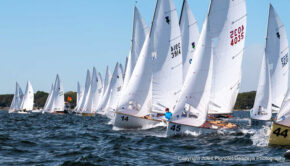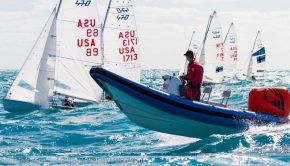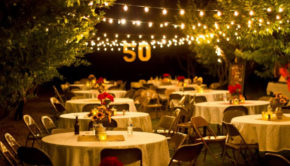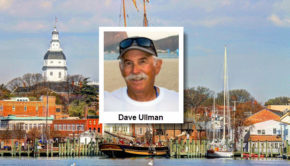COMMENTARY: Managing the balance between growth and competition
Published on February 21st, 2013
The impact of competition in the sport of sailing is undeniable. The higher the level, the more gratifying the prize, but the fewer willing to climb that mountain. Every class of racing, whether it’s handicap or one design, must decide what balance they seek to achieve.
Professional sailor and sailmaker Dave Ullman provides some examples of this balance in action….
Let’s start with the Melges 24 class. When I got involved in the second year of the Melges 24, that class grew at the fleet level. This was the early nineties, and in California we had a number of fleets, and people could compete locally or they could attend some of the traveling events within the state. But people didn’t need to travel at all to have good racing. They had it in their home waters.
But now there is no Melges 24 fleet racing. Why? Expertise was the demise of the class. Some teams just got too good. The competitiveness within the class exceeded the ability of most people to keep up with it. Managing a class’ competitiveness is two edged sword. Everybody might say they want to race against the best sailors in a highly competitive environment, and for some that is true. But there is a larger group that might like it for awhile but ultimately it becomes too much.
Let’s consider how most of the established one design classes don’t place limits on professional sailors. Classes like Thistles and Lightnings maintain their balance because they have strong fleets, local sailing, and a family foundation. And while these classes do have pro sailors within their ranks, most of them are sailmakers who understand the importance of keeping the class strong. Between the attitude of the class, and the boats offering good but not great performance, these classes can maintain a reasonable balance that serves a broader audience.
When the Melges 32 class came along in 2005, it offered phenomenal performance and immediately attracted a grand prix type crowd. It never got footing at the fleet level. It has established itself as a national and international boat, just like the 24 has become. Both these classes schedule a national circuit of events that everybody travels to. But I don’t see the growth of these classes having much more, if any, left in it.
As for the newest Melges boat, the Melges 20, this is another fast and fun boat that has attracted an elite group of sailors. Can this class get established at the fleet level? It’s possible. The class has attracted great numbers at recent events in Florida, and while it is still growing, I wonder how much growth is left. Some of the new teams are spending a lot of money to compete in the class, and this historically is not what helps to foster growth.
It’s great that there are various types of racing, but regardless of the level, if the motivation is to grow, the focus must be toward the “mid-fleet” sailors and not the top tier level.









 We’ll keep your information safe.
We’ll keep your information safe.